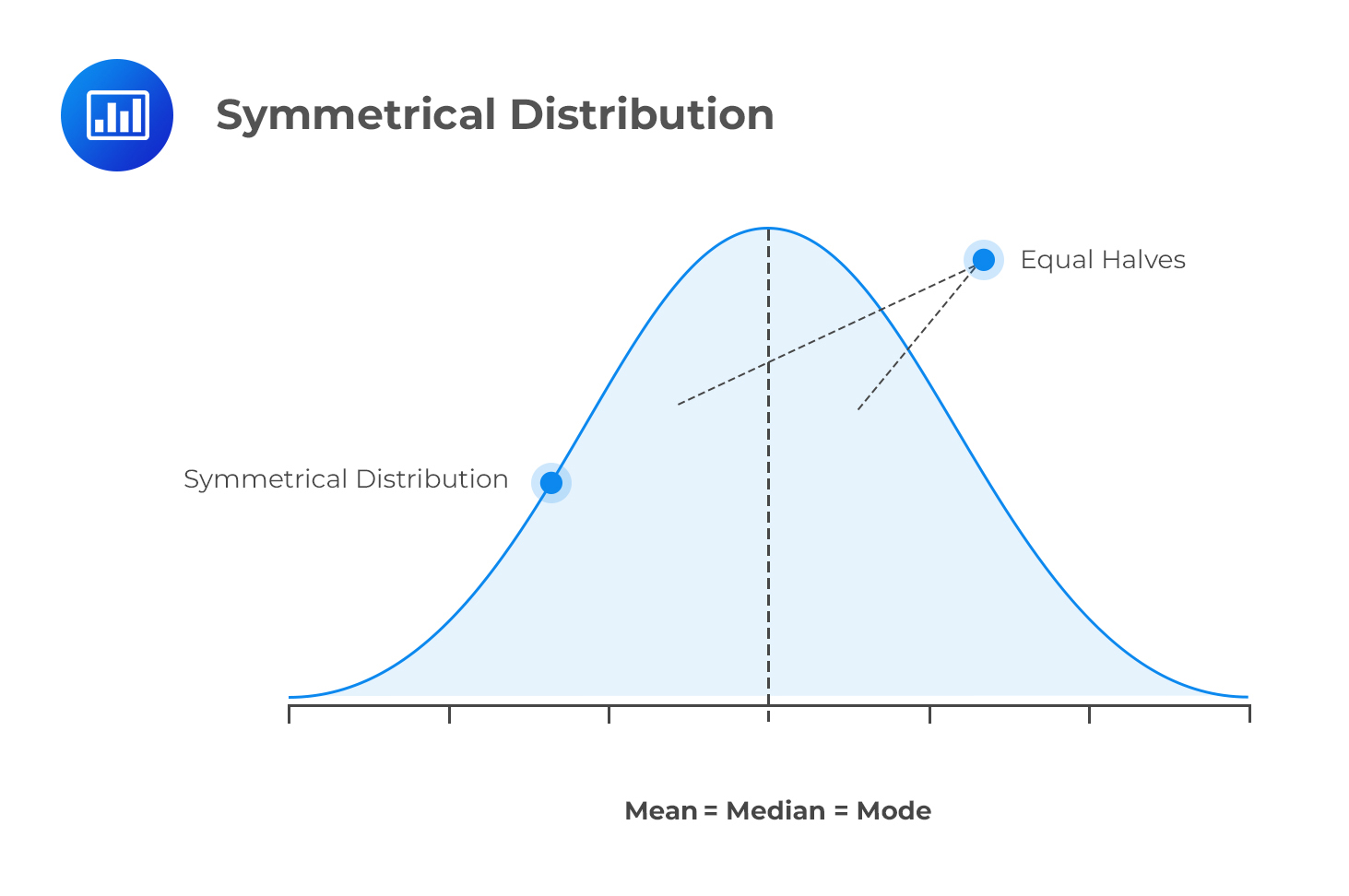Independent vs. Dependent Events
[vsw id=”hu47ZbsskEw” source=”youtube” width=”611″ height=”344″ autoplay=”no”] Two or more events are independent if... Read More
[vsw id=”alD9eAT2lQU” source=”youtube” width=”611″ height=”344″ autoplay=”no”]
A unimodal distribution is a distribution that has one clear peak. The values increase first, rising to a single highest point where they then start to decrease. A unimodal distribution can either be symmetrical or nonsymmetrical.
A symmetrical distribution is one where the mean, mode, and median are all equal. In such a distribution, the intervals of gains or losses exhibit the same frequency. For instance, if we have a symmetrical distribution with a mean return of zero, then the frequency of losses between -2% and -1% will be equal to the frequency of gains between 1% and 2%.

A distribution that deviates from the symmetrical distribution is said to be nonsymmetrical, and that’s how we end up having positive skewness and negative skewness.
This is the tendency of a given frequency curve leaning towards the left. Conversely, the ‘tail’ extends to the right. In this distribution, candidates should note the following:

A good example of a positively skewed distribution would be the age distribution in a developing country.
This is a frequency curve where the long tail extends to the left. It has the following characteristics:

A good example of a negatively skewed distribution would be the age distribution in a developed country.
Get Ahead on Your Study Prep This Cyber Monday! Save 35% on all CFA® and FRM® Unlimited Packages. Use code CYBERMONDAY at checkout. Offer ends Dec 1st.